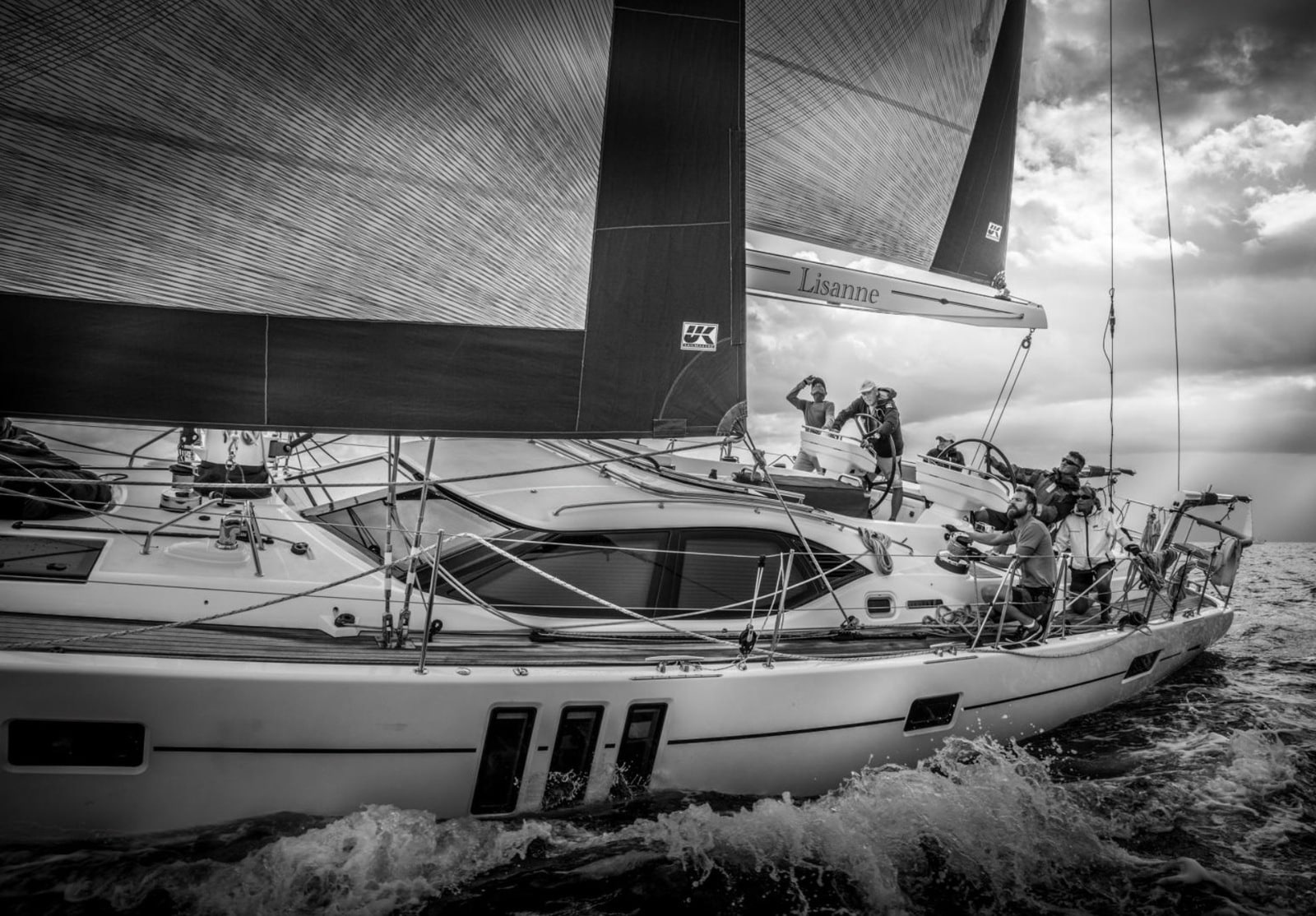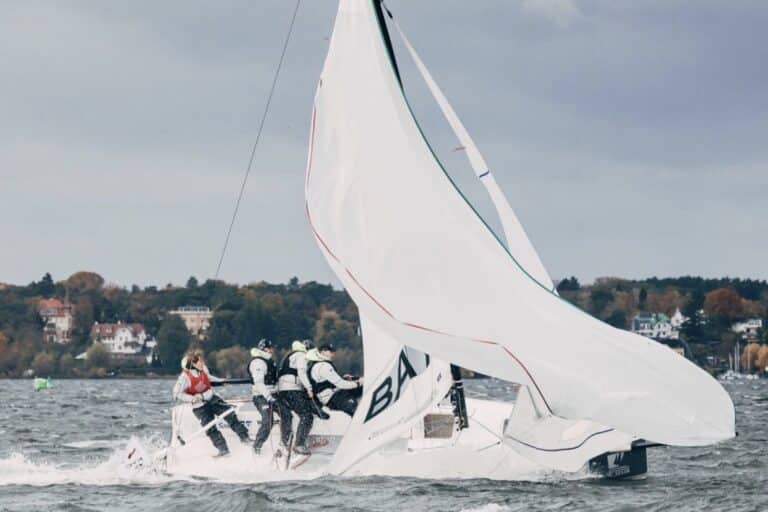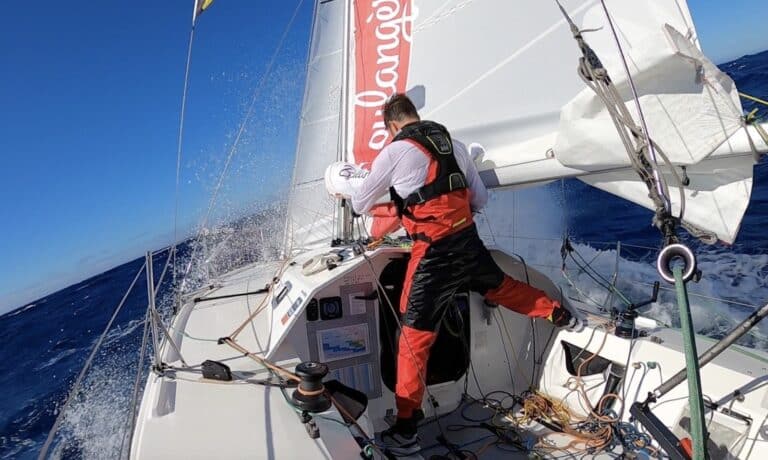Everyone loves a great photo of a sailboat—especially if it’s theirs. At the same time, we’ve all seen our share of shots that end up as nothing more than tiny white triangles on the horizon. So how do the pros capture those jaw-dropping images that make us feel the speed, spray, and drama of sailing?
To get the answer from an industry pro, tune in to Ultimate Sailing’s Sharon Green, who joined the UK Sailmakers Lessons Learned podcast to share what goes into her unforgettable photos—from gear choices to something as simple (but essential) as keeping the horizon level.
For the rest of us who aren’t hanging out of helicopters with long lenses, here are some practical tips to help you up your game, whether you’re snapping pics from onboard, a chase boat, or the shore.
General Photo Tips
- Use a polarizing filter to cut glare and make water and sails pop.
- Fast shutter speeds (1/1000+) freeze spray and action.
- Shoot RAW so you can recover details from bright sails and dark water.
- Focus manually so you can choose your depth of field.
- Tell a story with a mix of wide establishing shots with the whole boat and sails in frame, plus mid-range action, and close-up details.
- Think wide, then crop — make sure you capture the whole boat (masthead and bow included).
- Be intentional — shooting RAW means larger files, better to set up a strong photo and take a burst of shots than to fill a card with random clicks.


Two photos of an Arcona 50 outfitted with sails by UK Sailmakers Sweden have two different perspectives and moods, due to a variety of factors including angle, lighting, background, and point of sail.
From Onboard
- Brace yourself to reduce camera shake in a moving boat.
- Get low — shooting from deck level exaggerates heel and wave action.
Capture the crew — expressions, teamwork, and hands on sheets/helm bring the story alive. - Use lines (sheets, halyards, shadows) to lead the viewer’s eye.
- Level your horizon unless you want to exaggerate heel.
- Shoot through the boat — winches, lifelines, and rigging add context.
- Details matter — telltales streaming, spray flying, salt-crusted hands.
- Protect your gear with a waterproof bag or case for storage when not in use. Bring a microfiber cloth to use as needed. Salt spray is the enemy of cameras.
From a Chase Boat
- Talk to your driver before leaving the dock so you’re in the right place at the right time without throwing wakes at the fleet.
- Plan your angles to capture the most dynamic scene, two good positions to shoot from are slightly forward of the beam or from the stern-quarter.
- Work the light: early morning and late afternoon give depth and warmth.
- Try a variety of lenses including long lenses for compression and wide lenses for drama.
- Get low to the waterline for maximum impact.
- Use burst mode to catch the perfect split-second in maneuvers.
- Watch your background – A clean horizon or shoreline beats cluttered docks and buildings.


Santa Cruz 70, Westerly, in front of the iconic Golden Gate bridge and MAT 1245, Obsession, in Western Australia, both racing with Titanium sails.
From Shore
- Seek height: bridges, docks, cliffs, or even drones give new perspectives.
- Look for patterns and geometry in fleet racing.
- Play with scale for added drama. Small boats in big seas, and dinghies set against superyachts.
- Use reflections and shadows in calm water or low light.
- Frame with foreground like rocks, masts, or shoreline vegetation.
Now It’s Your Turn
While you may still end up with the occasional “white triangle” shot, these tips will help you come home with sailing photos that tell a real story. And we’d love to see them!
Share your best photos (and a short testimonial, if you’d like) using our new submission form here. Selected photos and stories may be featured on the UK Sailmakers website or social media.
So grab your camera, head to the water, and show us sailing through your lens.





